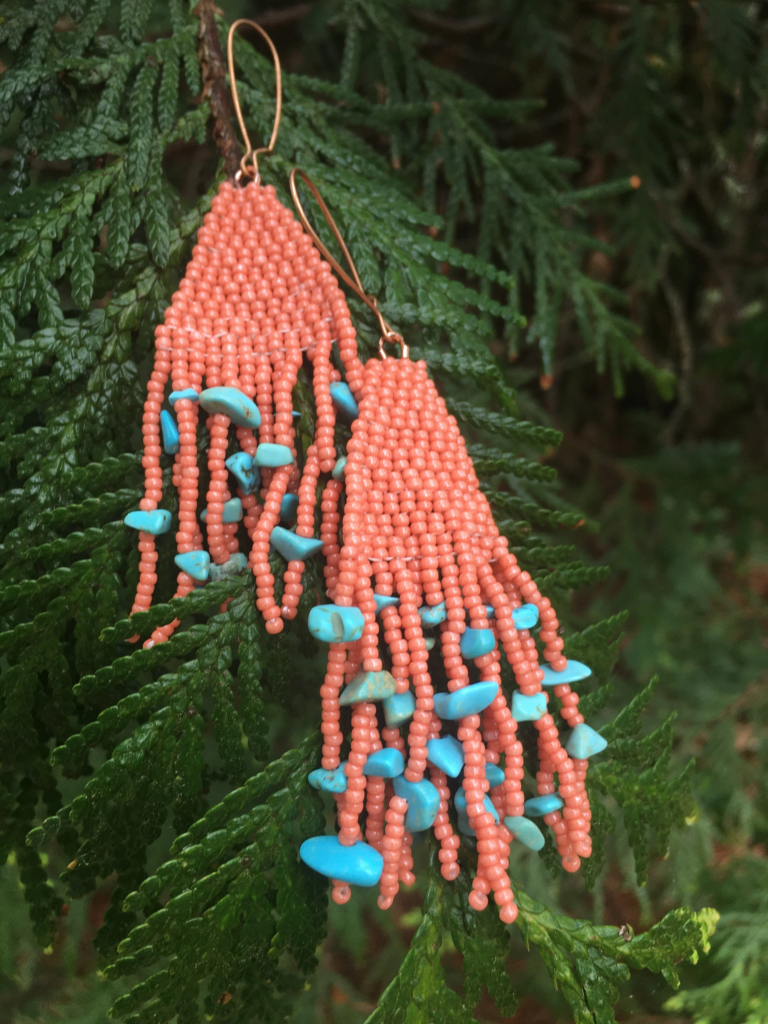My project intended to reflect the physical look of lymph nodes through beaded earrings. The turquoise represents the lymph nodes and the smaller pink, beaded segments represent the lymphatic ducts. I’ve enjoyed using this type of medium for the project! The entire project took me about five hours from start to finish.
More specifically, I was interested in the lymphatic system’s chronic disease, elephantiasis. This is a type of disease that is commonly found in Asia and parts of Africa and is transmitted through mosquitos that carry blood from a human infected with a specific parasitic nematode worm. The worm will reproduce and this cycle will occur a number of times and will physically clog the lymph nodes so that there is no room for proper filtration of lymph. This mechanical clogging causes lymphodema and creates elephant-like swollen extremities.




Emily Parsons’ STEAM project is a representation of the lymphatic system and its role in elephantiasis. This disease is caused by parasitic nematodes that are transmitted to humans via the bite of an infected mosquito. When they reach the adult phase, these microscopic worms will travel to the lymphatic system, which is a vital part of the body’s immune system. Lymph nodes are responsible for filtering lymph fluid for harmful substances, waste, and microbes. Lymph vessels carry lymph fluid into the medulla of the lymph nodes for filtering via lymphocytes, then out through efferent lymph vessels. Emily’s representation of the lymphatic system consists of beaded earrings. She showed the lymph nodes as larger chunks of turquoise with smaller red beaded sections, representing lymph ducts, passing through the lymph nodes. With elephantiasis infections, adult nematode worms can become too numerous and can clog the lymphatic system. This will impair the normal flow of lymph fluid causing it to back up into the tissues, resulting in lymphedema. This leads to chronic swelling of the extremities, giving them an elephant-like appearance. Nematode species Wuchereria bancrofti, Brugia malayi, and Brugia timori can all cause this disease called filariasis. The objective her project covered was “Relate how the lymphatic system can indicate disease.”